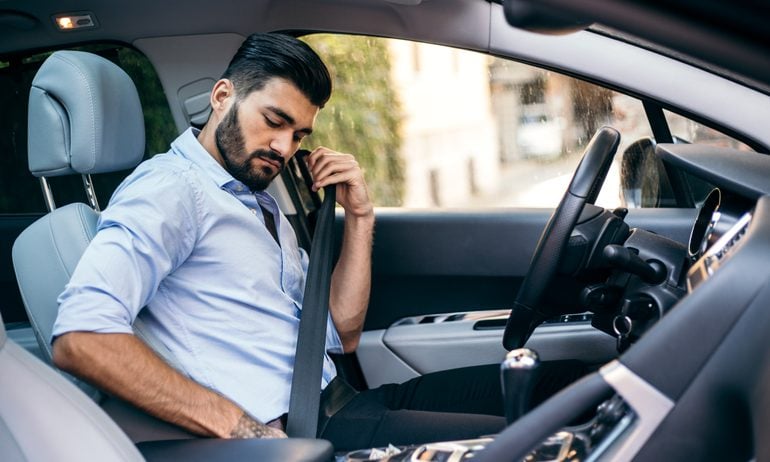Underinsured Motorist Coverage Explained
Underinsured motorist coverage pays when an at-fault driver doesn’t have enough insurance to cover the damage they've caused.

Many, or all, of the products featured on this page are from our advertising partners who compensate us when you take certain actions on our website or click to take an action on their website. However, this does not influence our evaluations. Our opinions are our own. Here is a list of our partners and here's how we make money.
If you’re in a car accident and another driver is at fault, their auto insurance will generally cover your medical bills and repair costs. But what if the driver doesn’t have enough insurance to pay all your expenses? That’s where underinsured motorist coverage can help.

See what you could save on car insurance
Easily compare personalized rates to see how much switching car insurance could save you.What is underinsured motorist coverage?
Underinsured motorist coverage is the type of car insurance coverage that pays if the driver responsible for an accident doesn’t have sufficient insurance to cover your injuries or vehicle damage.
It’s often sold along with uninsured motorist coverage, which is similar but pays when the at-fault driver doesn’t have any auto insurance.
Underinsured motorist coverage is required in almost a dozen states and optional in many others.
» MORE: What does car insurance cover?
How does underinsured motorist coverage work?
Underinsured motorists are drivers who have liability car insurance, just not enough to pay for all of the damage they’ve caused. Liability insurance is the part of an auto policy that pays for vehicle repairs and injuries to others after a crash you’re responsible for. If an at-fault driver doesn’t have enough liability coverage, other injured drivers and passengers may end up footing the rest of the bills.
Underinsured motorist coverage prevents that by paying the difference between the at-fault driver’s policy limit and the total cost of the damage they caused.
A policy limit is the maximum amount your insurance will pay per claim. In the case of liability insurance, most policies include a limit for medical bills per person, another limit for combined medical bills per accident and a third limit for total property damage per accident.
Underinsured motorist coverage can be particularly useful if you’re hit by someone with minimum required car insurance. In some states, minimum liability limits for bodily injury are as low as $15,000; medical bills after a bad accident could easily exceed that amount.
What does underinsured motorist coverage pay for?
There are two types of underinsured motorist coverage:
Underinsured motorist bodily injury, or UIMBI, pays for medical expenses, pain and suffering, funeral costs and lost wages if you can’t work after a crash with an at-fault driver who doesn’t have enough car insurance to cover all damages.
Underinsured motorist property damage, or UIMPD, pays for car and property damage after an accident with a minimally insured at-fault driver. A deductible may apply.
Which states require underinsured motorist coverage?
Underinsured motorist coverage is required in ten states. In Virginia, car insurance isn’t mandatory — but if you do buy it, you must include both underinsured motorist bodily injury and property damage in your policy.
Use the table below to see the minimum amount of underinsured motorist coverage you need to purchase in your state.
State | Underinsured motorist coverage requirements |
|---|---|
Coverage is optional if available. | |
Coverage is optional if available. | |
Coverage is optional if available. | |
Coverage is optional if available. | |
Coverage is optional if available. | |
Coverage is optional if available. | |
UIMBI required: $25,000 per person/$50,000 per accident. | |
Coverage is optional if available. | |
Coverage is optional if available. | |
Coverage is optional if available. | |
Coverage is optional if available. | |
Coverage is optional if available. | |
Coverage is optional if available. | |
Coverage is optional if available. | |
Coverage is optional if available. | |
UIMBI required: $25,000 per person/$50,000 per accident. | |
Coverage is optional if available. | |
Coverage is optional if available. | |
UIMBI required: $50,000 per person/$100,000 per accident. | |
UIMBI required: $30,000 per person/$60,000 per accident. UIMPD required: $15,000 per accident. | |
Coverage is optional if available. | |
Coverage is optional if available. | |
UIMBI required: $25,000 per person/$50,000 per accident. | |
Coverage is optional if available. | |
Coverage is optional if available. | |
Coverage is optional if available. | |
UIMBI required: $25,000 per person/$50,000 per accident. | |
Coverage is optional if available. | |
UIMBI required: $25,000 per person/$50,000 per accident. UIMPD required: $25,000 per accident. | |
Coverage is optional if available. | |
Coverage is optional if available. | |
Coverage is optional if available. | |
Coverage is optional if available. | |
UIMBI required: $25,000 per person/$50,000 per accident. | |
Coverage is optional if available. | |
Coverage is optional if available. | |
Coverage is optional if available. | |
Coverage is optional if available. | |
Coverage is optional if available. | |
Coverage is optional if available. | |
UIMBI required: $25,000 per person/$50,000 per accident. | |
Coverage is optional if available. | |
Coverage is optional if available. | |
Coverage is optional if available. | |
UIMBI required: $50,000 per person/$100,000 per accident. UIMPD required: $10,000 per accident. | |
UIMBI required: $25,000 per person/$50,000 per accident. UIMPD required: $20,000 per accident. | |
Coverage is optional if available. | |
Coverage is optional if available. | |
Coverage is optional if available. | |
Coverage is optional if available. | |
Coverage is optional if available. | |
*Car insurance in Virginia is not required, but if purchased, uninsured motorist coverage is required at these minimum limits. | |

See what you could save on car insurance
Easily compare personalized rates to see how much switching car insurance could save you.How much does underinsured motorist coverage cost?
Underinsured motorist coverage generally costs less than other types of car insurance. As with most types of insurance, if you increase coverage limits, you'll pay more.
Drivers often choose to set their uninsured and underinsured motorist limits at the same level as their liability limits. All three types of coverage are designed to protect your financial assets from the expenses of a car accident, so the higher your net worth, the higher you may want these limits to be.
» MORE: Compare car insurance rates
‘Stacking’ underinsured motorist coverage
Some states and insurance companies allow you to “stack” your underinsured motorist bodily injury coverage, which means combining your limits for multiple vehicles to increase your overall limit. Doing this will typically raise your premium.
Imagine you have two vehicles on the same policy, each with $25,000 worth of underinsured motorist coverage. If you have stacked coverage and you’re in an accident with an underinsured driver, you’d have a total of $50,000 in coverage for medical bills beyond what the other driver’s insurance will pay.


